6. January 2020 - 11:59
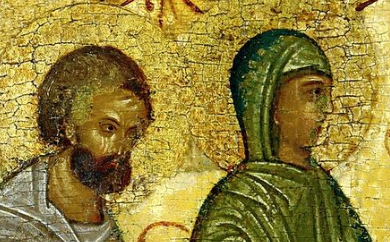 Mt. 1:18-25
Mt. 1:18-25
Now the birth of Jesus Christ was on this wise: When as his mother Mary was espoused to Joseph, before they came together, she was found with child of the Holy Ghost. Then Joseph her husband, being a just man, and not willing to make her a public example, was minded to put her away privily. But while he thought on these things, behold, the angel of the Lord appeared unto him in a dream, saying, Joseph, thou son of David, fear not to take unto thee Mary thy wife: for that which is conceived in her is of the Holy Ghost. And she shall bring forth a son, and thou shalt call his name Jesus: for he shall save his people from their sins. Now all this was done, that it might be fulfilled which was spoken of the Lord by the prophet, saying, Behold, a virgin shall be with child, and shall bring forth a son, and they shall call his name Emmanuel, which being interpreted is, God with us. Then Joseph being raised from sleep did as the angel of the Lord had bidden him, and took unto him his wife: And knew her not till she had brought forth her firstborn son: and he called his name Jesus.
Our Lord is born today, let us rejoice and be glad! No one may be sad today no matter what sorrow there be, no matter what losses we have suffered, because today is a festival of life for everyone. There is no more fear of death, for in the love that Christ has revealed to us there is no fear, and He gives to all the joy of eternal life.
6. January 2020 - 11:54
 In the name of the Father, and of the Son, and of the Holy Spirit!
In the name of the Father, and of the Son, and of the Holy Spirit!
In today’s Gospel readings of the Royal Hours and the Liturgy we have heard the story of the Birth of the Messiah from the mouths of different Evangelists.
To confirm the fact that all that happened 2,000 years ago is true, the Apostles not only refer to the words of the witnesses but also to geographical and even astronomical evidence.
31. December 2019 - 12:05
 The author of this definitive article addressing the matter of homosexuality in the light of Orthodox theology is Bradley Nassif, a professor of biblical and theological studies at North Park University, Chicago. He holds a PhD in patristics from Fordham University (directed by the late Father John Meyendorff), an MDiv from St. Vladimir’s Orthodox Seminary, MAs in New Testament from Denver Seminary and European History from Wichita State University, and a BA in Religion and Philosophy from Friends University. His most recent book is a co-edited volume, The Philokalia: A Classic Text of Orthodox Spirituality (Oxford University Press).
The author of this definitive article addressing the matter of homosexuality in the light of Orthodox theology is Bradley Nassif, a professor of biblical and theological studies at North Park University, Chicago. He holds a PhD in patristics from Fordham University (directed by the late Father John Meyendorff), an MDiv from St. Vladimir’s Orthodox Seminary, MAs in New Testament from Denver Seminary and European History from Wichita State University, and a BA in Religion and Philosophy from Friends University. His most recent book is a co-edited volume, The Philokalia: A Classic Text of Orthodox Spirituality (Oxford University Press).
With the author’s permission we are reproducing Dr. Nassif’s article, which first appeared in The Wheel, on OrthoChristian.com, to make it more available.
G. K. Chesterton once said that one should never tear down a fence unless he knows why it was put there in the first place. In this article, I will attempt to explain some of the foundational reasons why the Church has put a fence around its beliefs regarding the nature and purpose of human sexuality. Those beliefs are summarized in a “Statement on Marriage and Sexuality” by the Assembly of Canonical Orthodox Bishops of the United States:
30. December 2019 - 16:23
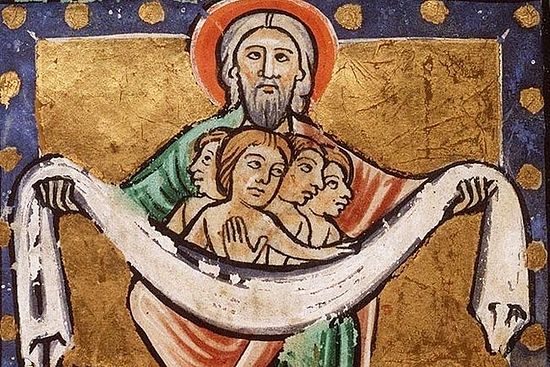 In the Name of the Father and of the Son and of the Holy Spirit.
In the Name of the Father and of the Son and of the Holy Spirit.
'Many are called but few are chosen'. So says Christ in today's Gospel. If we think of the knowledge of God conserved among different peoples in the world before Christ, these words have a special significance.
20. December 2019 - 9:52
The Memory of Elder Ephraim (Moraitis)
Elder Ephraim of Philotheou, or, as he is commonly called, of Arizona, has reposed in the Lord. He was the last surviving disciple of the great St. Joseph the Hesychast, and the fruits of his own life include nearly twenty monasteries in America and Canada and hundreds of thousands of people converted and strengthened in the faith around the world.
Three meetings,
thanks to which we learned
of the life of the future Elder Ephraim with the Elder Joseph
9. December 2019 - 12:36
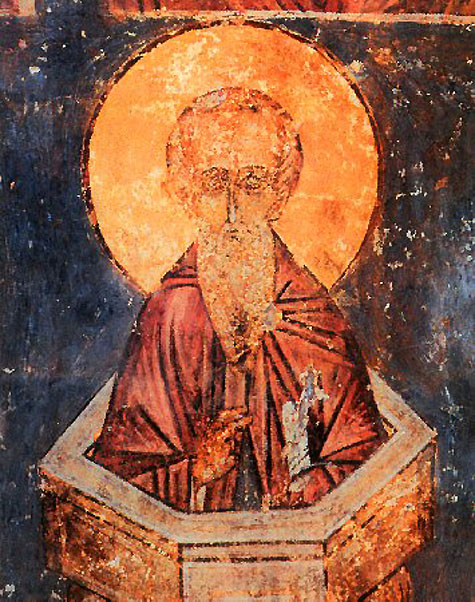 Saint Alypius the Stylite was born in the city of Adrianopolis in Paphlagonia. His mother, a Christian, was widowed early, and she sent her son to be educated by Bishop Theodore. She distributed her substance to the poor, then began to live an ascetic life near the church as a deaconess.
Saint Alypius the Stylite was born in the city of Adrianopolis in Paphlagonia. His mother, a Christian, was widowed early, and she sent her son to be educated by Bishop Theodore. She distributed her substance to the poor, then began to live an ascetic life near the church as a deaconess.
Saint Alypius, from his early years, wanted to devote his life to God and yearned for the solitary life, although Bishop Theodore would not give him permission to do so. Once, when Saint Alypius was accompanying his bishop to Constantinople, the holy Martyr Euphemia (September 16) appeared to him in a vision, summoning Saint Alypius to return to Adrianopolis and found a church in her name.
With contributions offered by believers in Adrianopolis, Saint Alypius did build a church in the name of the holy Martyr Euphemia, on the site of a dilapidated pagan temple infested by legions of devils. Beside the church, under the open sky, the saint erected a pillar over a pagan tomb. For fifty-three years Saint Alypius struggled upon the pillar, praying to God and teaching those who came to him.
The demons which infested the pagan cemetery fell upon the ascetic by night and pelted him with stones. Saint Alypius, wanted nothing to stand in the way of the attacks of the spirits of darkness, then even took down the boards that served him as a roof, protecting him from the rain and wind. In the face of the saint’s conquering steadfastness, the demons fled the place forever, which had been sanctified by his deed of voluntary martyrdom.
Fourteen years before his death, Saint Alypius was no longer able to stand. He was compelled to lie on his side because of the weakness of his legs, and endured grievous sufferings with humble gratitude. Around the saint’s pillar two monasteries sprang up: a men’s monastery on the one side, and a women’s monastery on the other. Saint Alypius introduced strict monastic rules for both monasteries and he directed both monasteries until his death. Saint Alypius reposed in the year 640, at age 118. The body of the venerable stylite was buried in the church he founded in honor of the holy Martyr Euphemia. The relics of the saint of God healed many of those who came in faith.
Source: OCA
 The author of this definitive article addressing the matter of homosexuality in the light of Orthodox theology is Bradley Nassif, a professor of biblical and theological studies at North Park University, Chicago. He holds a PhD in patristics from Fordham University (directed by the late Father John Meyendorff), an MDiv from St. Vladimir’s Orthodox Seminary, MAs in New Testament from Denver Seminary and European History from Wichita State University, and a BA in Religion and Philosophy from Friends University. His most recent book is a co-edited volume, The Philokalia: A Classic Text of Orthodox Spirituality (Oxford University Press).
The author of this definitive article addressing the matter of homosexuality in the light of Orthodox theology is Bradley Nassif, a professor of biblical and theological studies at North Park University, Chicago. He holds a PhD in patristics from Fordham University (directed by the late Father John Meyendorff), an MDiv from St. Vladimir’s Orthodox Seminary, MAs in New Testament from Denver Seminary and European History from Wichita State University, and a BA in Religion and Philosophy from Friends University. His most recent book is a co-edited volume, The Philokalia: A Classic Text of Orthodox Spirituality (Oxford University Press).
 Mt. 1:18-25
Mt. 1:18-25 In the name of the Father, and of the Son, and of the Holy Spirit!
In the name of the Father, and of the Son, and of the Holy Spirit! In the Name of the Father and of the Son and of the Holy Spirit.
In the Name of the Father and of the Son and of the Holy Spirit.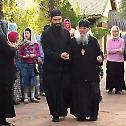

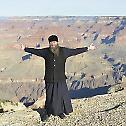
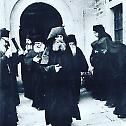
 Saint Alypius the Stylite was born in the city of Adrianopolis in Paphlagonia. His mother, a Christian, was widowed early, and she sent her son to be educated by Bishop Theodore. She distributed her substance to the poor, then began to live an ascetic life near the church as a deaconess.
Saint Alypius the Stylite was born in the city of Adrianopolis in Paphlagonia. His mother, a Christian, was widowed early, and she sent her son to be educated by Bishop Theodore. She distributed her substance to the poor, then began to live an ascetic life near the church as a deaconess.